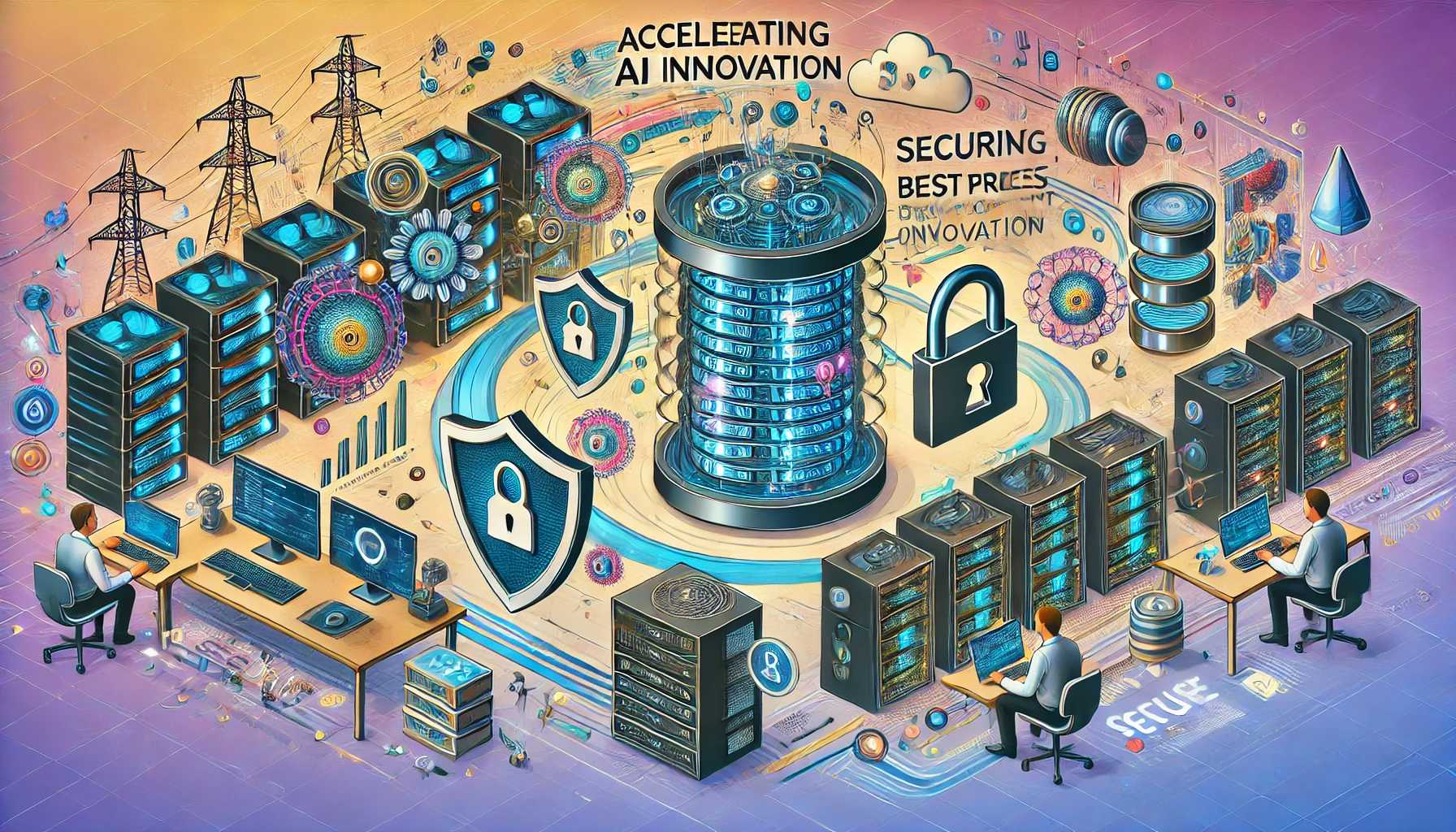Security Best Practices for Accelerating Generative AI Innovation
Generative AI, which includes technologies like OpenAI's GPT (Generative Pre-trained Transformer) models, has revolutionized industries ranging from healthcare to entertainment. These advancements, however, also introduce significant security considerations. As organizations accelerate their adoption of generative AI for innovation and productivity gains, implementing robust security measures becomes crucial to mitigate risks such as data breaches, malicious use, and ethical concerns. This blog post explores essential security best practices to safeguard generative AI initiatives and promote responsible innovation.
1. Data Privacy and Confidentiality
Data Minimization: Limit the use of sensitive data to what is strictly necessary for model training and deployment. Anonymize or aggregate data where possible to reduce privacy risks.
Encryption: Use strong encryption methods to protect data both at rest and in transit. Encrypt sensitive information used for training and fine-tune access controls to minimize exposure.
Compliance: Adhere to relevant data protection regulations (e.g., GDPR, CCPA) and industry standards when handling personal or sensitive data. Conduct regular audits to ensure compliance and address any vulnerabilities promptly.
2. Model Security and Integrity
Model Validation: Implement rigorous validation procedures to ensure the integrity and reliability of generative AI models. Verify inputs and outputs to detect anomalies or adversarial attacks.
Code Review: Conduct thorough code reviews and implement secure coding practices to mitigate vulnerabilities in AI model architecture and implementation.
Version Control: Maintain version control of AI models and datasets to track changes, facilitate audits, and enable rollback in case of security incidents or model drift.
3. Secure Deployment and Infrastructure
Secure APIs: Securely expose AI functionalities via APIs (Application Programming Interfaces) with authentication, rate limiting, and validation checks to prevent misuse or unauthorized access.
Container Security: Containerize AI applications using platforms like Docker or Kubernetes and apply security best practices such as image scanning, isolation, and least privilege access controls.
Cloud Security: If leveraging cloud services, implement robust cloud security measures including identity and access management (IAM), encryption, and monitoring to protect AI assets and data.
4. Ethical Use and Mitigation of Biases
Bias Detection: Incorporate bias detection techniques during model development and deployment to identify and mitigate biases related to gender, race, or other sensitive attributes.
Transparency: Promote transparency in AI operations by documenting model decisions, data sources, and potential biases. Provide clear explanations for AI-generated outputs to users and stakeholders.
Ethical Guidelines: Establish ethical guidelines and governance frameworks for AI development and deployment, considering societal impact, fairness, and accountability.
5. Continuous Monitoring and Incident Response
Monitoring: Implement real-time monitoring and logging of AI systems to detect suspicious activities, anomalies, or performance degradation that may indicate security breaches.
Incident Response Plan: Develop and regularly update an incident response plan specific to AI-related security incidents. Outline roles, responsibilities, and procedures for containment, mitigation, and recovery.
Training and Awareness: Provide ongoing training and awareness programs for AI developers, data scientists, and stakeholders on security best practices, emerging threats, and ethical considerations.
Collaboration and Responsible AI Governance
Cross-functional Collaboration: Foster collaboration between AI researchers, cybersecurity experts, legal professionals, and stakeholders to integrate security considerations throughout the AI lifecycle—from development to deployment.
Responsible AI Governance: Establish clear policies, guidelines, and frameworks for responsible AI governance. Define roles and responsibilities for oversight, compliance with regulations, and ethical use of AI technologies.
Stakeholder Engagement: Engage with stakeholders, including customers, partners, and regulatory bodies, to solicit feedback, address concerns, and build trust in AI applications through transparent communication and accountability.
7. Third-Party Risk Management
Vendor Assessment: Conduct thorough assessments of third-party vendors and partners involved in AI development, deployment, or data processing. Ensure they adhere to security standards, compliance requirements, and ethical guidelines.
Contractual Obligations: Include security and privacy clauses in contracts with third-party vendors to establish expectations, responsibilities, and measures for data protection, confidentiality, and incident response.
Continuous Monitoring: Implement ongoing monitoring and audits of third-party activities and access to AI systems and data to detect and mitigate potential security risks or breaches promptly.
8. Education and Awareness
Training Programs: Provide comprehensive training programs for employees, developers, and stakeholders on cybersecurity best practices, AI-specific threats, and ethical considerations related to generative AI technologies.
Awareness Campaigns: Raise awareness among users and the general public about the capabilities, limitations, and potential risks of AI technologies. Educate stakeholders on how to responsibly interact with AI-powered systems and recognize potential security threats.
Knowledge Sharing: Encourage knowledge sharing and collaboration within the AI community through conferences, workshops, and forums dedicated to discussing security challenges, best practices, and emerging trends in AI innovation.
9. Adaptive Security Measures
Threat Intelligence: Stay informed about emerging threats, vulnerabilities, and attack vectors targeting AI systems. Utilize threat intelligence feeds, research publications, and industry reports to proactively update security measures.
Adaptive Defenses: Implement adaptive security measures, such as machine learning-based anomaly detection and behavioral analysis, to detect and respond to evolving cybersecurity threats in real-time.
Incident Simulation: Conduct periodic simulations and tabletop exercises to test incident response capabilities and readiness to handle potential security incidents or breaches affecting generative AI systems.
Conclusion
As organizations accelerate their adoption of generative AI technologies for innovation and competitive advantage, integrating robust security practices is paramount to mitigate risks, protect data privacy, and ensure ethical use. By adopting a proactive approach to security from data encryption and secure deployment to ongoing monitoring and stakeholder education organizations can foster a culture of trust, responsibility, and resilience in their AI initiatives.
Collaboration between AI developers, cybersecurity experts, legal professionals, and stakeholders is essential to address the multifaceted challenges posed by generative AI technologies. By prioritizing security and ethical considerations throughout the AI lifecycle, organizations can maximize the benefits of AI innovation while safeguarding against potential threats and upholding societal values.
As generative AI continues to evolve and reshape industries, maintaining vigilance, adaptability, and adherence to best practices will be crucial in harnessing its transformative potential responsibly and sustainably.









